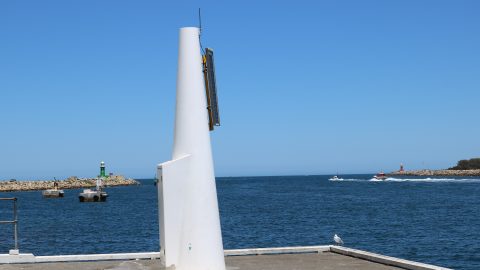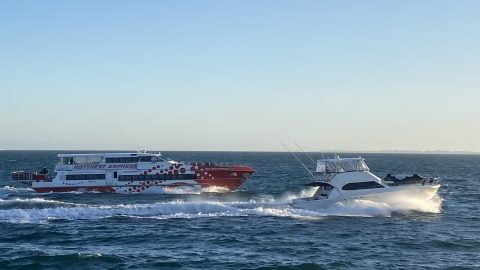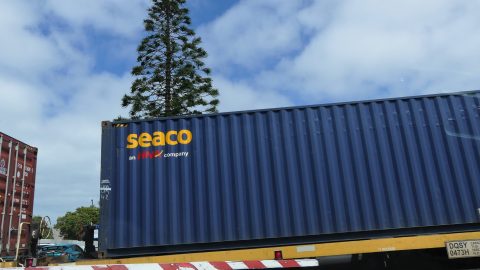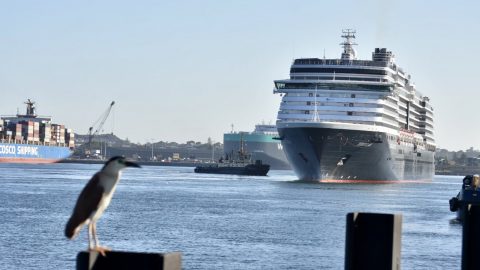On Wednesday, 16 November 2022, we reported on the proceeding before the Full Bench of the Fair Work Commission, Svitzer versus three unions, MUA, AIMPEM and AMOU.
We noted it appeared that, if FWC ordered ‘termination’ of Svitzer’s proposed lockout of its employees from their tugs starting today at 8 am Freo time, as against the mere ‘suspension’ of the proposed lockout, this this would have the automatic effect, under the Fair Work Act, of also terminating the union members’ current ‘protected industrial action’. In short, Svitzer appeared to have engineered the lockout as a means of ending the current union industrial action for good.

Credit Jean Hudson
At 8 am this morning Fremantle time, the Full Bench of the Fair Work Commission, sitting in Sydney, ordered the suspension of the proposed lockout for 6 months.

The Full Bench said –
As a consequence of the above findings, we are required under s 424(1) to make an order suspending or terminating Svitzer’s protected industrial action. We consider that the appropriate course is to make an order suspending Svitzer’s protected industrial action for a period of six months. The effect of this order under the FW Act will be that no party will be able to take protected industrial action for the period of the suspension: s 413(7)(a).
Svitzer’s notifying of the lockout for today was engineered to produce a termination. It likely won’t be happy.
The unions argued for an order merely suspending the lockout, which would not have the effect of permanently terminating the current protected industrial action, so they will be partly happy, one suspects.
And the Federal Minister for Employment and Workplace Relations, Tony Burke, sat on the fence. He no doubt will continue to encourage the warring parties to sit down and resolve their differences.
Here are the core submissions these parties made to the Full Bench –
Svitzer’s submissions
Svitzer argued that termination of its lockout action rather than suspension is appropriate because-
a. The threat to the economy caused by the indefinite Lockout is ongoing rather than temporary.
b. A suspension of protected action under s 424 has already been attempted. It failed — after this suspension expired, the unions continued to organise employee industrial action, leading Svitzer to eventually give notice of the Lockout.
c. The extensive bargaining for the Proposed Agreement has been continuing for over 3 years. It included 75 bargaining and drafting meetings, one failed vote, an application to terminate the current enterprise agreement, two s 424 applications, 4 sessions with Bull DP (as he then was), 11 meetings and 9 conciliation conferences . The differences between Svitzer and the unions remain irreconcilable.If the Commission merely suspends industrial action for some weeks or months, there is little reason to expect that Svitzer and the unions will be able to reach agreement during the period of suspension.
d. Hence, a suspension would be of little assistance to anyone because hostilities are likely to resume after the suspension ends, as in fact
happened after the previous suspension.
The Unions submissions
The Unions essentially approach the issue in the same terms as the MUA, which argued that –
It would be inappropriate for a termination order to be made for the following reasons:
a. bargaining, whilst protracted, has not reached an insoluble impasse;
b. bargaining has been productive, particularly with the assistance of the Commission;
c. the MUA seeks to continue bargaining, including with the assistance of the
Commission;
d. the MUA and its members’ bargaining power will be diminished substantially if termination is granted and the MUA and its members are precluded from organising and taking protected industrial action;
e. the MUA is of the view that progress is being made in bargaining and the parties should continue to bargain in good faith to reach agreement;
f. Svitzer has continued with its lockout in circumstances where the MUA and other unions have withdrawn employee claim action and undertaken to the Commission not to notify such action until the New Year. Svitzer can remove the basis for the proceedings and the asserted threat to the Australian economy or a part of it and not face any further protected industrial action in the short term. It has elected not to do so. This militates against it being rewarded in achieving its industrial objectives in this application of: (1) removing the MUA and its members’ ability to take protected industrial action; and (2) bringing bargaining to an end and having the parties proceed to workplace determination proceedings before the Commission;
g. Svitzer has effectively withdrawn from bargaining and refused to engage in bargaining since 20 October 2022;
h. Svitzer has changed its position in bargaining since 20 October 2022 in such a manner as to frustrate and undermine negotiations;
i. Svitzer’s threatened lockout is manifestly disproportionate to the low-level and small-scale employee claim action it is likely to be said to be responsive to.
The Minister’s submissions
The Minister sat on the fence, it seems, leaving it to the Full Bench to do what it thought best, submitting –
Having formed the requisite satisfaction, the Commission is required to make an order suspending or terminating the protected industrial action.
22. Primarily, that is a matter for the Commission placing weight on the interests of the parties.
23. Having regard to the effect of the impending protected industrial action on the Australian economy, a suspension that leaves open the possibility of further damage by protected industrial action with its attendant risks for the economy (and relevant parts of it) ought to be guarded against.
24. On the evidence filed by the Minister, it is clear that the Employer Response action will cause very significant damage to the economy of Australia. It will have a critical impact on those industries which rely upon the free movement of goods to and from the Ports, and the broader impact of the action upon the economy by severely impacting supply chains.
25. At this stage, given: the statement of Svitzer on 14 November 2022; its indications in the proceedings that it does not intend to defer the action; the indefinite nature of the action which has been announced; the protracted duration of the bargaining between the parties; and the history of action having been previously suspended (and the parties then not having reached agreement) – the Commission may find that the termination of the Employer Response Action is more likely to have the effect of permanently quelling the threat of damage to the economy (or the safety and welfare of the population).
26. The effect of such a termination would be that due to the operation of section 413(7), no further protected industrial action could be taken by any of the parties.
27. The Commission may, of course, decide that suspension of the action is the more appropriate course, having regard to the objects of the FW Act including achieving fairness through enterprise-level collective bargaining underpinned by good faith bargaining obligations (section 3(f), FW Act), and all the circumstances of the bargaining and the Employer Response Action.
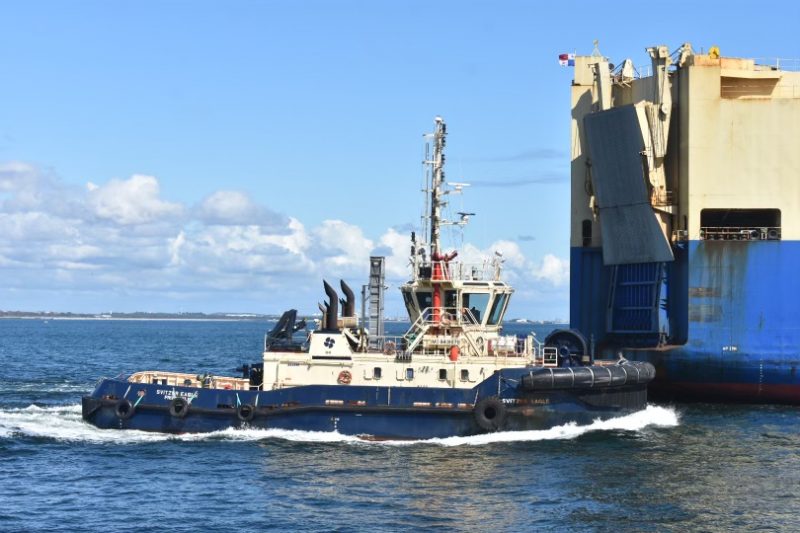
Svitzer Eagle. Credit Jean Hudson
As noted, the Full Bench has decided to merely suspend Svitzer’s proposed lockout for 6 months, with the result that the current protected industrial action of the union members is a also suspended for 6 months.
And Fremantle Ports’ notice to Shipping Agents, that we reported on on Wednesday, becomes redundant, for now.
It’s back to the industrial relations drawing board for the unions and Svitzer. Or so it seems.
* By Michael Barker, editor, Fremantle Shipping News
WHILE YOU’RE HERE –
PLEASE HELP US TO GROW FREMANTLE SHIPPING NEWS
FSN is a reader-supported, volunteer-assisted online magazine all about Fremantle. Thanks for helping to keep FSN keeping on!
** Don’t forget to SUBSCRIBE to receive your free copy of The Weekly Edition of the Shipping News each Friday!
